Magical Poinsettias
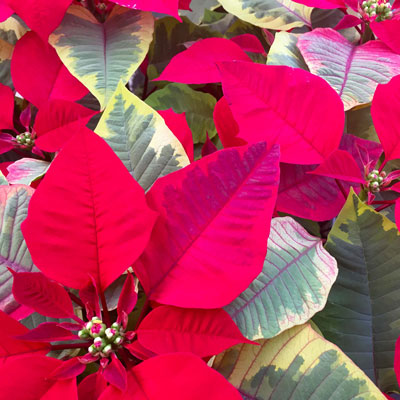
Photo: I’m a sucker for brightly colored foliage. When it comes with red floral bracts, hey, sign me up! I’m in Poinsettia Paradise!
Back in the early ‘60s most of the poinsettias grown and sold were still tall red varieties like Elizabeth Ecke. They outgrew their pots, and florists had to figure out ways to conceal their unsightly stems.
That was when shorter types started coming into the market, and it was also when growth retardants were introduced into the trade. Growing poinsettias became a great deal easier.
Today poinsettias are a major cash crop for greenhouse producers, and they’re readily available at just about every retail establishment you enter. I decided, rather than telling the story about how they were brought into the country by the ambassador to Mexico, and instead of sharing all the myths and legends they carry along with them, that I’d just jot down some fun and disjointed facts about this showy flower of the season.
• All poinsettia flowers are yellow. Yep. They’re the tiny things in the centers of the big, showy floral bracts of red, pink or white.
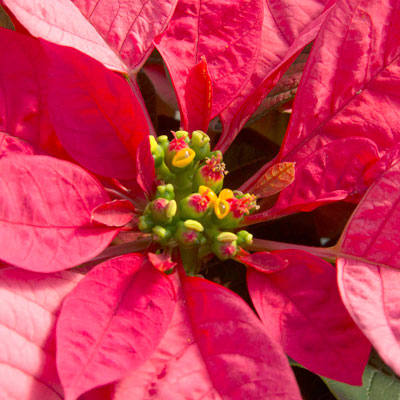
Photo: You can see the true yellow flowers in the center of any poinsettia’s colorful floral bracts.
• Poinsettias are euphorbias. That may not interest you – until you find out that other euphorbias include baseball cactus, crown of thorns and pencil plant. It’s quite an odd genus.
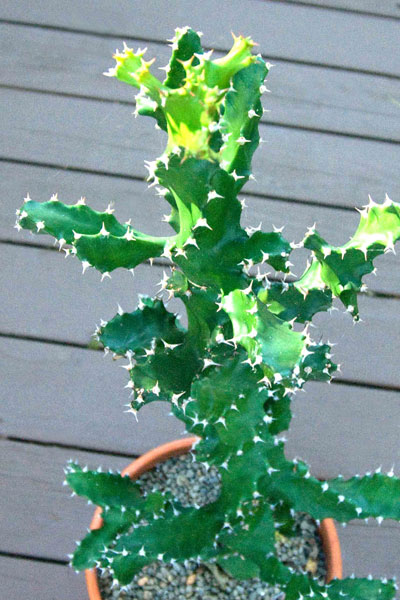
Photo: It looks like a cactus, but it’s in the genus Euphorbia, which means that it’s actually sister to our poinsettias!
• Poinsettias grow to be 8 or 10 feet tall and wide in a single season. If it didn’t freeze where you are, they’d make tall shrubs for your gardens.
• The plants are photoperiodic. That means they measure the length of the dark period (night) to determine when it’s time to come into flower. A flower-inducing hormone is produced in their growing tips. That hormone is destroyed by light. When nights become long enough (say, 14 hours of uninterrupted darkness), the plants make the transition and come into flower.
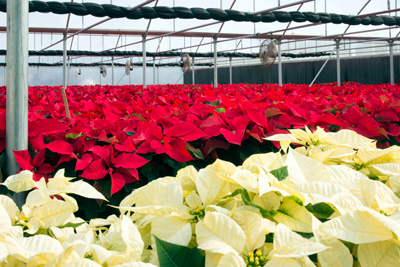
Photo: Greenhouse growers must be aware of ambient light sneaking in from neighboring businesses and homes. Light at night can keep poinsettias from coming into flower.
• That happens in late fall and early winter in nature (unless there are artificial lights), but if you pull black shade fabric over the plants, you can actually bring them into bloom at any month of the year.
• The plant you bought to enjoy this Christmas was an unrooted cutting in August. That’s how rapidly poinsettias grow.
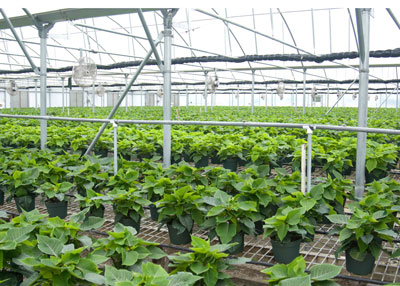
Photo: This is how poinsettias look one week into September. Three months later they’re in homes and businesses.
• By that same token, if you try to save your plant from one year to the next, you’ll have to pinch out its growing tips when it quits blooming. That will keep it compact so it will still fit in progressively larger containers.
• In many parts of Texas you will need to bring your poinsettia indoors before it comes into bloom. That’s to protect it from the early first freezes. But then you can shuttle it back out into the landscape on warm, sunny days.
• Do not allow artificial light to reach your poinsettia for 14 hours each night beginning October 1 if you want it to come into flower soon after Thanksgiving.
• Keep your poinsettia cool, bright and moist for the longest productive life inside your house.
• And my favorite fun fact: In research done at Ohio State University back in the ‘70s, it was discovered that poinsettias are not at all poisonous. Their white latex sap may cause skin and eye irritation, but it won’t harm you if ingested.
